I have many dirty little secrets, but one of the less (or more, depending on your point of view) embarassing is that I’m a bit of a railway geek. It’s not something I’m proud of and I have it under control. I would never mug old ladies to feed my habit, nor would I leave related detritus around for some kid to find and hurt himself on. I’m a very responsible addict and in that regard I’m going to geek out about in on my blog just the once.
So let’s get it over with. Here’s a list of the types of train I use on a regular and not so regular basis, presented in order of class.
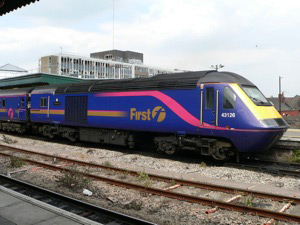
Class 43 HST
High Speed Train (HST), formerly Intercity 125, formed of two class 43 locomotives and a rake of Mark 3 coaches. This is what took me to Cardiff in June. Really excellent train, smooth and powerful and quite oldschool. Completely let down by the abomination of a train operating company that is First Great Western.
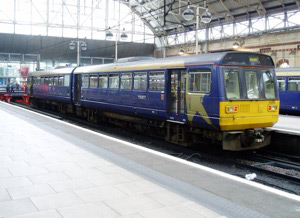
Class 142
Class 142: A horrible little two-coach diesel multiple unit (DMU) that’s actually based on the Leyland Bus and uses a large number of bits out of its parts bin. As a result it’s slow, uncomfortable and lurches about like a fat kid on a bouncy castle. I used to sometimes take these to Liverpool.
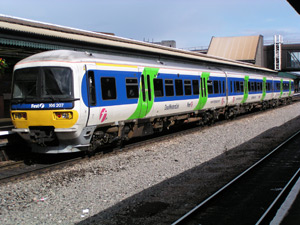
Class 166
Class 165/166 (class 166 is a 165 with carpets and air conditioning): I used to use these a lot when I lived in Langley as they serve commuter routes between London Paddington and Reading. Pretty standard three coach DMUs with passenger information displays that always seemed to be broken somehow. I also seem to remember them being particularly smelly (in a diesel exhaust way).
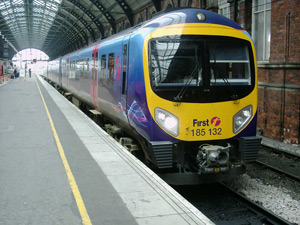
Class 185
Class 185: Brand new DMU, part of the Siemens Desiro family, operated by First Transpennine Express. Also used to take these to Liverpool, obviously in preference to the class 142. Each of the three coaches has its own engine which allows it to accelerate better than older units. Can limp home on just one engine in the unlikely event that the other two fail.
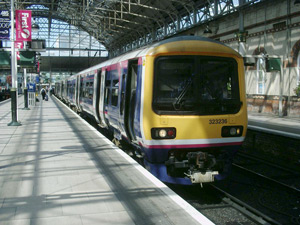
Class 323
Class 323: Three-coach AC electric multiple units (EMU) operated by Northern Rail that I take to work every day when I’m working in the office in Cheadle Hulme. Pretty basic but generally clean and reliable. They have a large number of gears and very whiny motors so they sound a bit like the trains on the Jubilee Line.
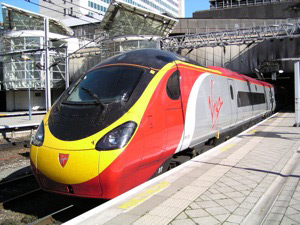
Class 390 Pendolino
Class 390: Everyone knows about these. It’s the new Virgin Pendolino which is actually an EMU even though it looks like two locomotives plus coaches (like the HST which it largely replaced). This is the one that can do 140mph and tilt when it’s going around corners. Supremely well appointed and comfortable.
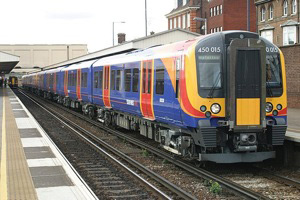
Class 450
Class 450: South West Trains ordered a whole bunch of these to replace their old “slam-door” EMUs, which became illegal a few years ago. I use these to travel between Dad’s house and London. Very fast, very clean and nicely airconditioned. They sometimes chain three of them up to form giant twelve coach trains. Makes a strange whistling noise when it sets off.
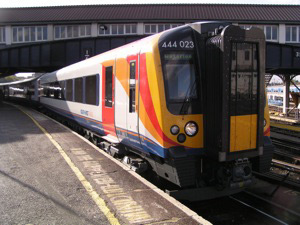
Class 444
Class 444: A five-coach version of the class 450 designed for longer-distance journeys. Has different door arrangements in order to maximise seating rather than making it eaiser to get on and off the train at more regular stops. Still has the whistling noise. This and the class 450 are in the Siemens Desiro family like the class 185.
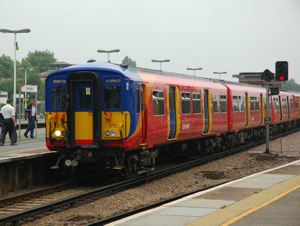
Class 455
Class 455: South West Trains four-coach DC EMUs that used to serve under British Rail but that have now (mostly) all been refurbished and repainted, which is a good thing because the last of the un-refurbished ones are pretty shitty now. They still feel like the old “slam-door” trains because they use similar motors and much of the same running gear.
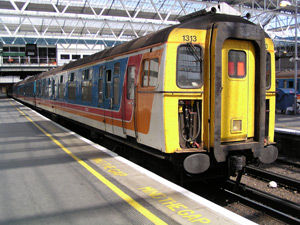
Class 412
Class 411, 412, 423 and similar: These aren’t used any more because they’ve been made illegal by the Health and Safety Gestapo (who don’t trust stupid people not to open the door of a train while it’s in motion), but everyone remembers these. Old, slow, unreliable, smelly, dirty and with more character than all of the above trains put together. Everyone complained about them while they were in service but secretly misses them now.
There, I’m done. I’m going back to the rehab clinic now.









